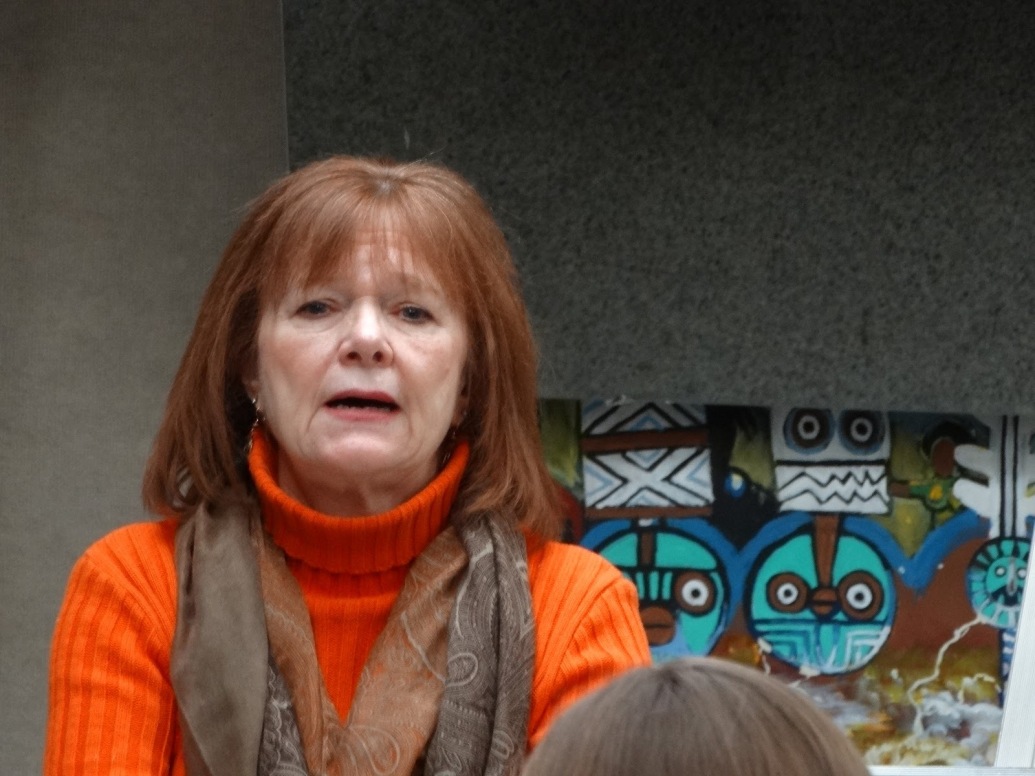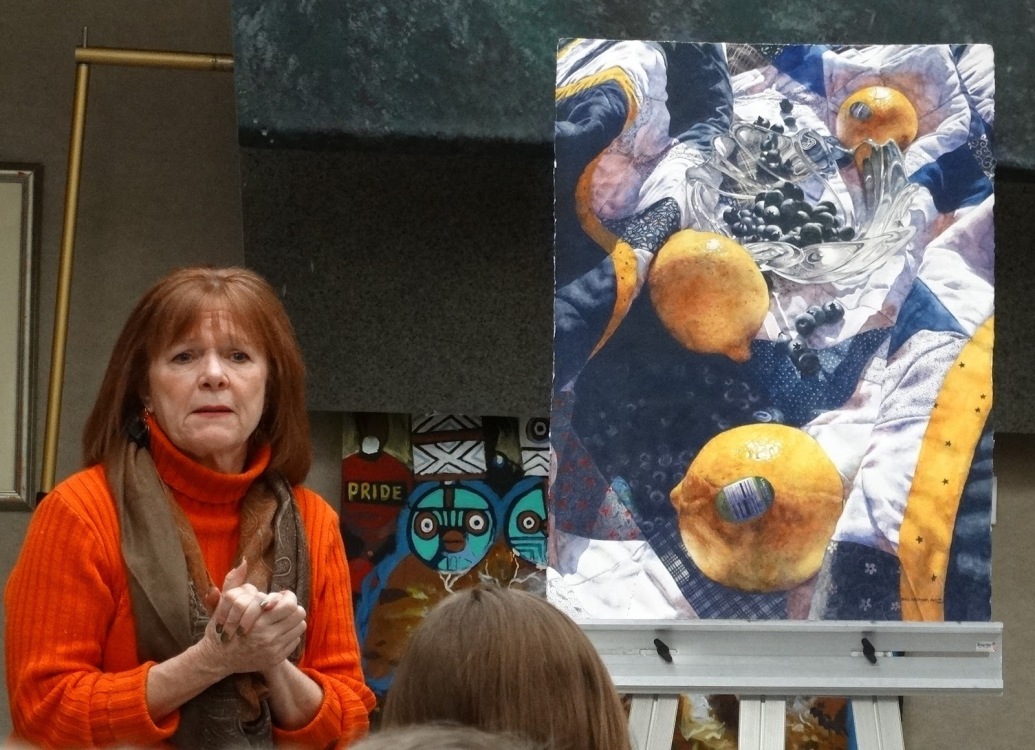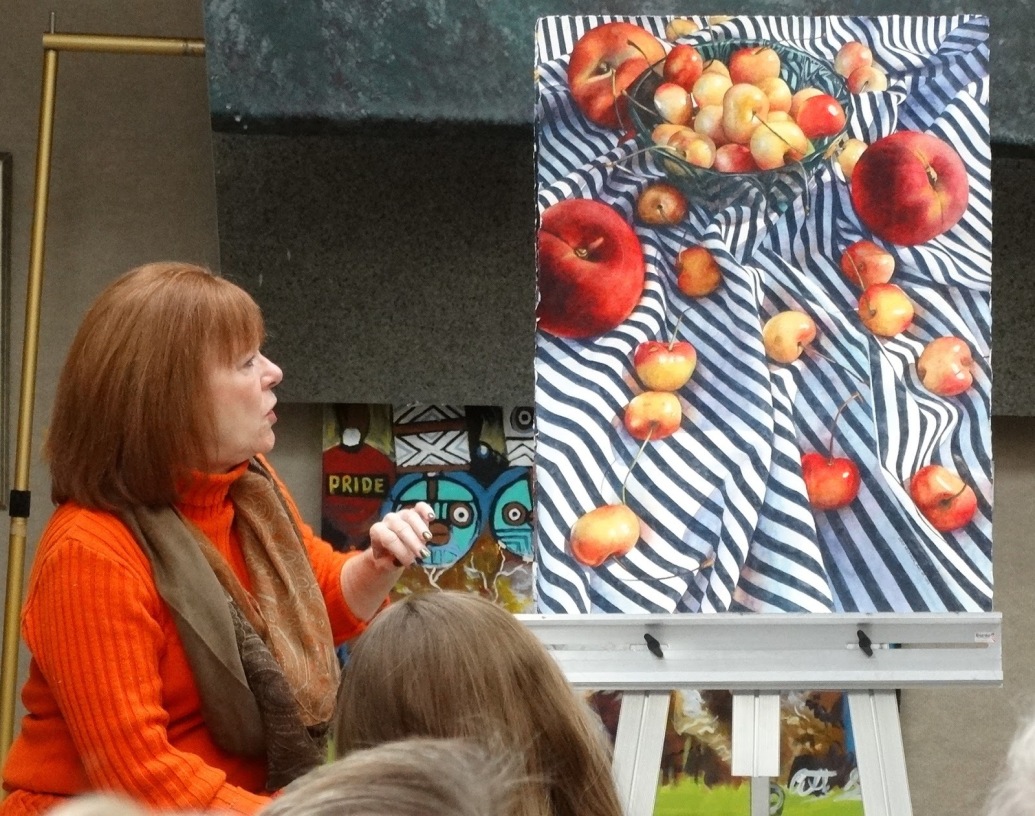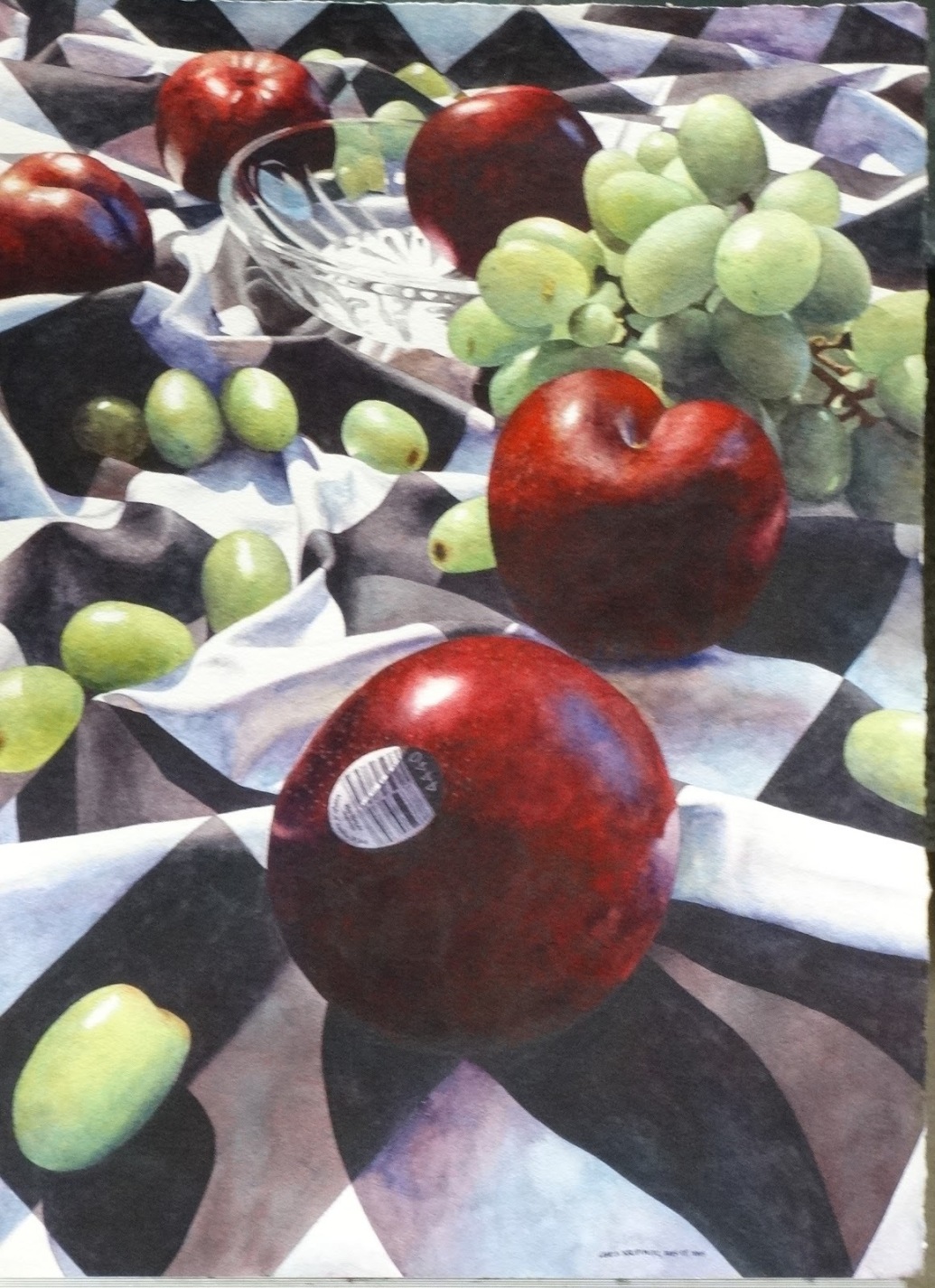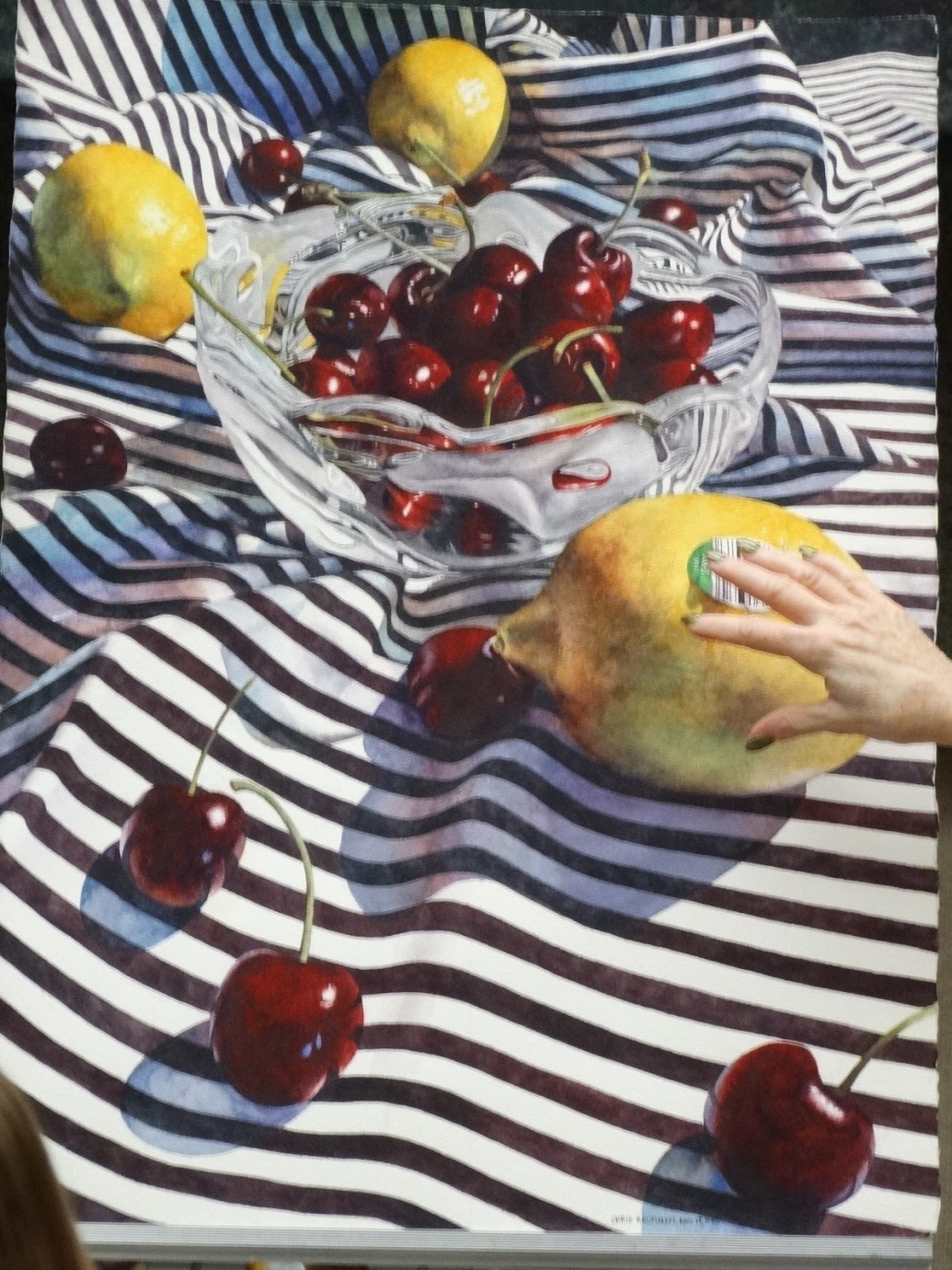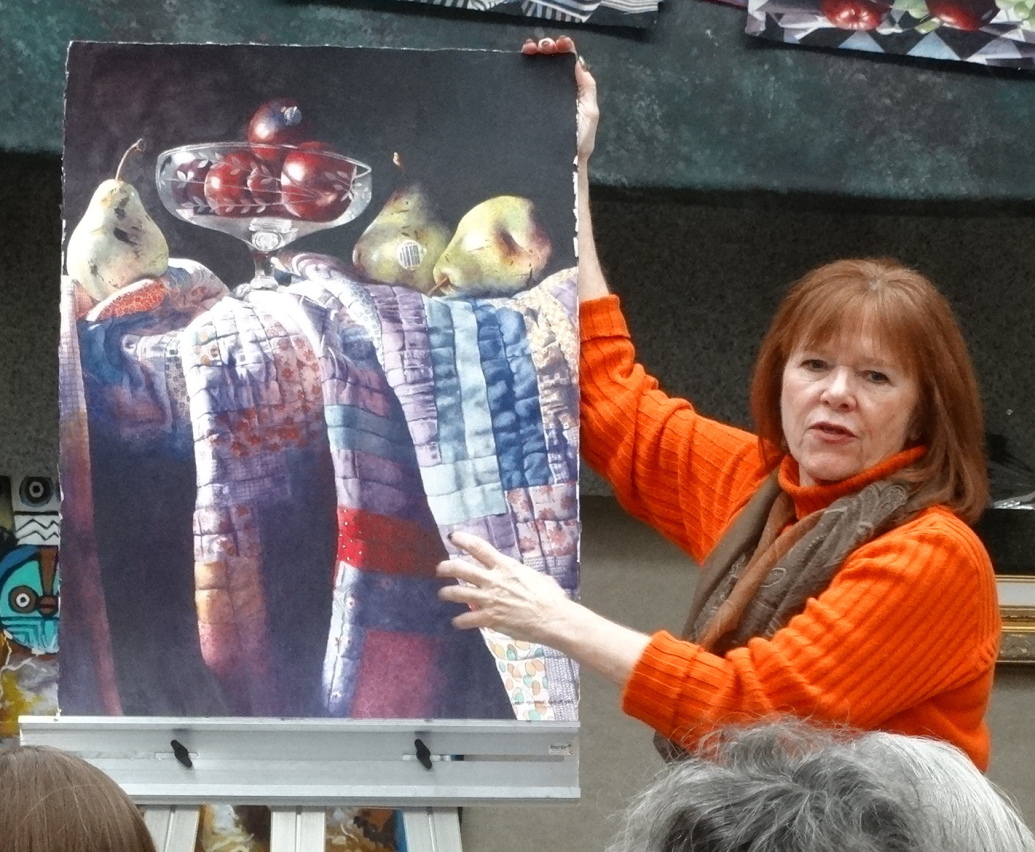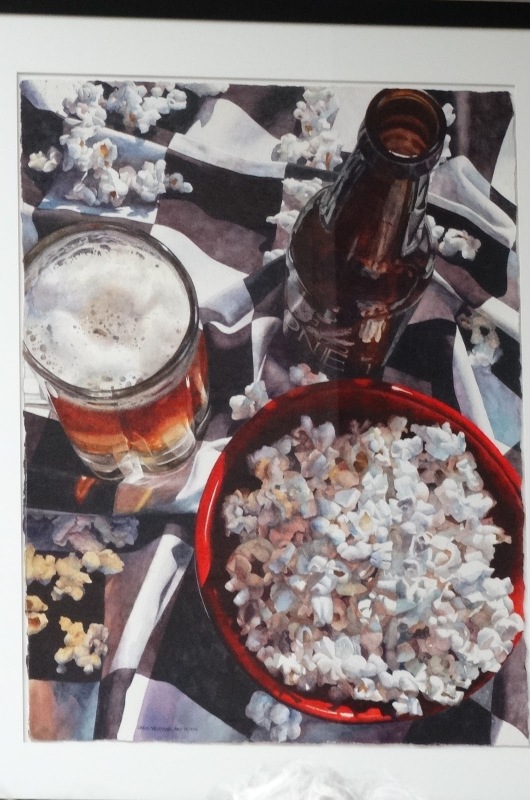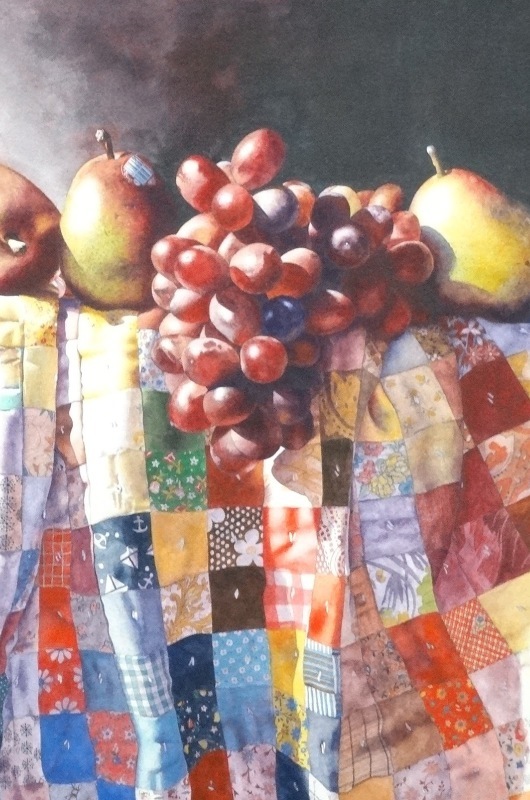PROGRAM - MARCH 6, 2019 - CHRIS KRUPINSKI
We were quite fortunate today to have Chris Krupinski give us an informative talk about her painting routine and painting pointers using her original paintings as examples.
Chris typically uses no more than 5 colors per painting, primarily Winsor Newton brand. New gamboge is her “go to” yellow, and Antwerp blue her favorite blue. Shadows consist of French ultramarine + alizarin, which she can manipulate to lean more red or blue as necessary. Usually she lays her shadows in first on her fabric while shadows are painted last over her fruit. Her blacks consist of a mixture of alizarin and Winsor green.
She uses Arches 300# rough paper and values good quality brushes, sizes 1 to 4 primarily, and laments the fact that Kolinsky sables are harder for her to find now.
She spoke about her composition set ups using her “magic” photo lamp. For years she would take her set ups outside to photograph them, but as the trees in her yard grew it was harder for her to find a good time to get the light just right. After attending a workshop where one of the students had a photo lamp, Chris bought one. She can now take photos at midnight if she wants to, and still get beautiful photos to work from. She may take 30-50 photos of a setup from all angles. Sometimes she will use Photoshop to place items into (or take them out of) her set up until she gets her composition just right.
Chris is a firm believer in drawing and will use a grid to draw out her paintings directly onto her watercolor paper. She will often place a large empty shape for an object, later filling it in as she moves through the painting, which always begins with her focal point, painting out from there. She owns no miskit, prefering to paint around all of her whites.
Chris is adamant that the background is just as important as the foreground and should be handled accordingly. When viewing her paintings up close and personal, this is quite apparent! The detail devoted to the quilt fabrics, which are her background, is absolutely amazing!
The use of triangles informs her compositions, as well as value, contrast, edge variance, details and areas for the eye to rest. All of these components are strategically thought out before she ever begins to paint, often “painting” in her head for weeks prior to actually picking up her paints. Chris likes to distribute color and shapes throughout her paintings, giving them unity. She paints one painting at a time, and it may take weeks to be completed.
Chris will present our fall workshop and we look forward to learning more from her then.
Submitted by Deb Ward
Photos by Deb Ward

